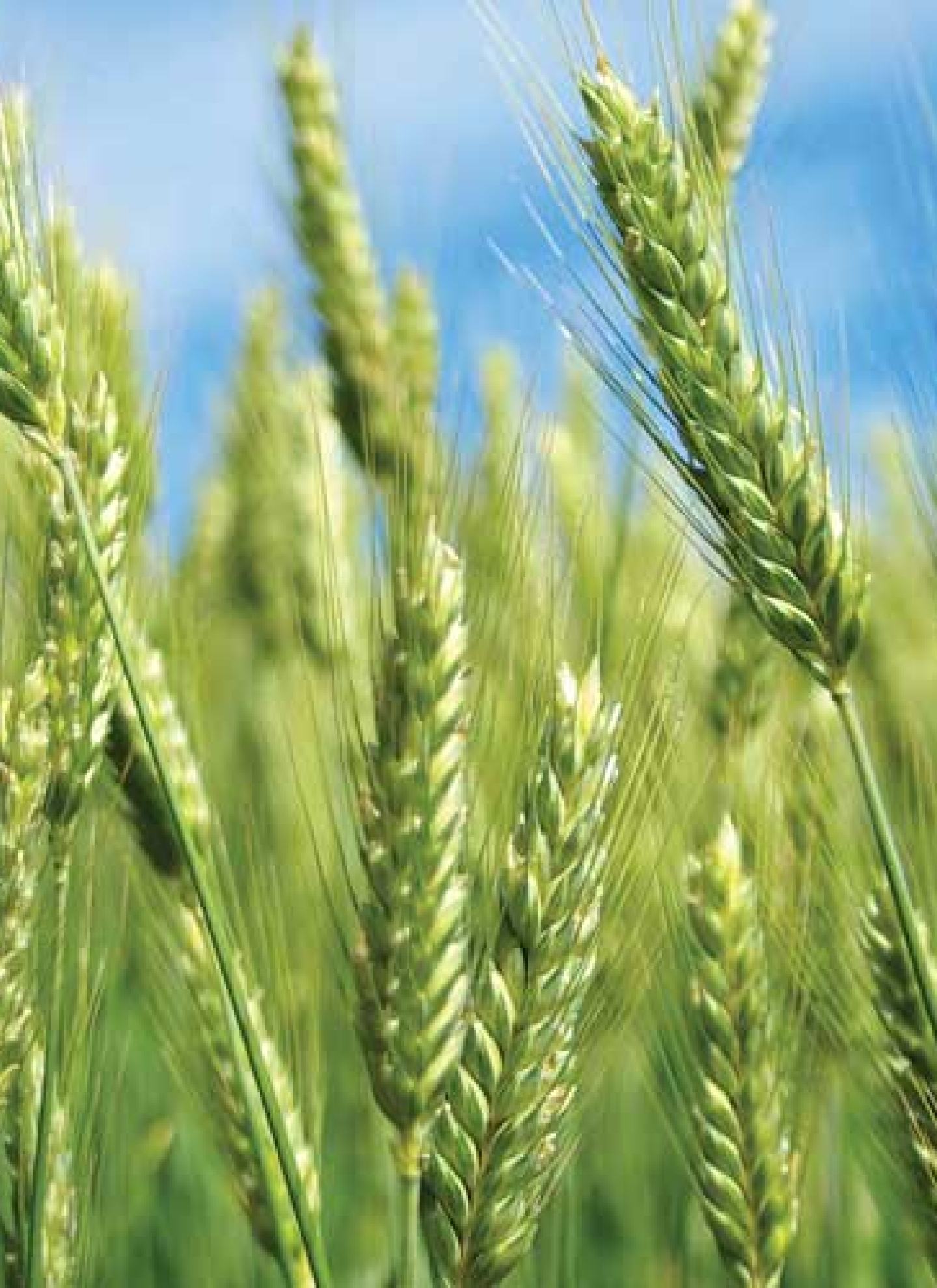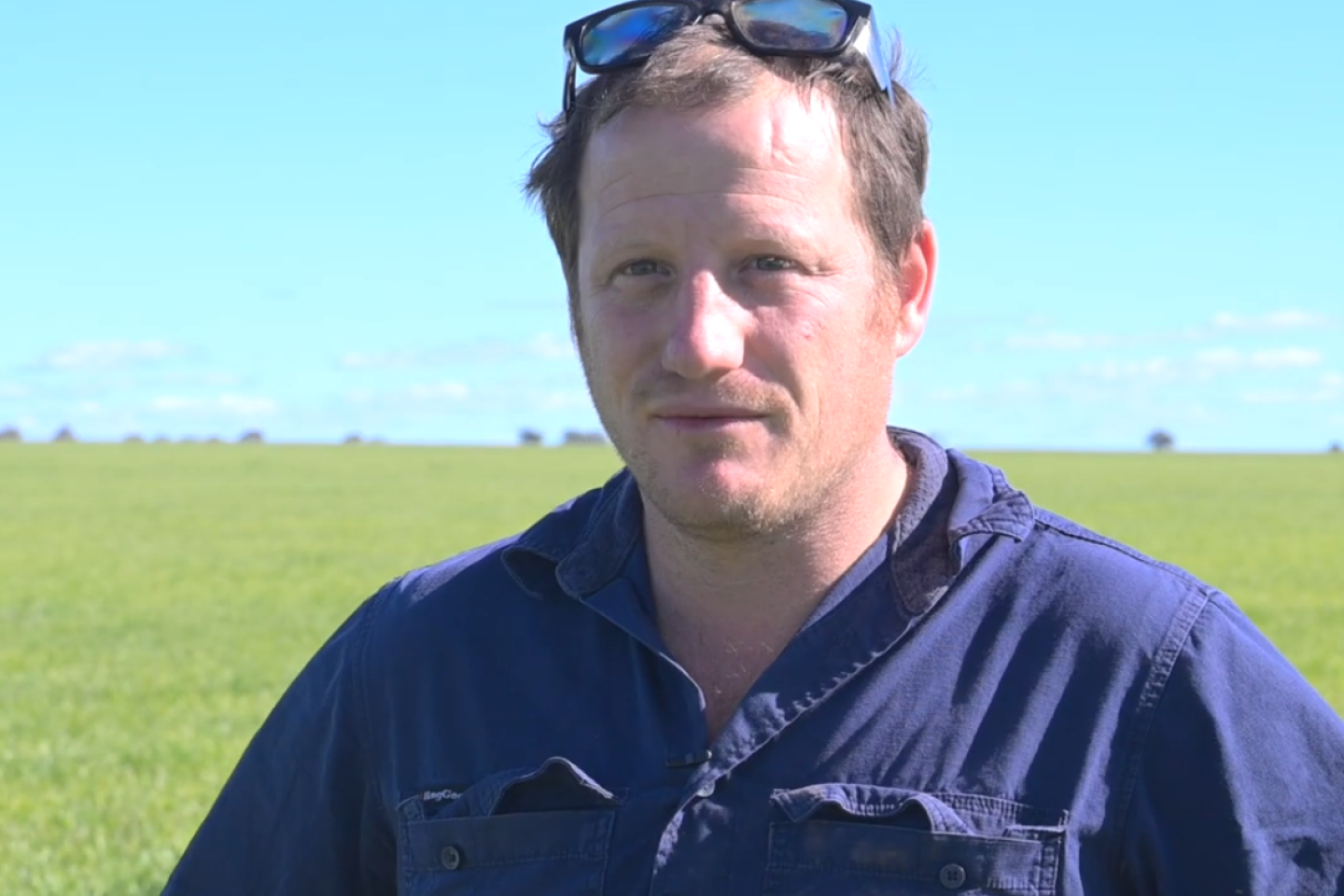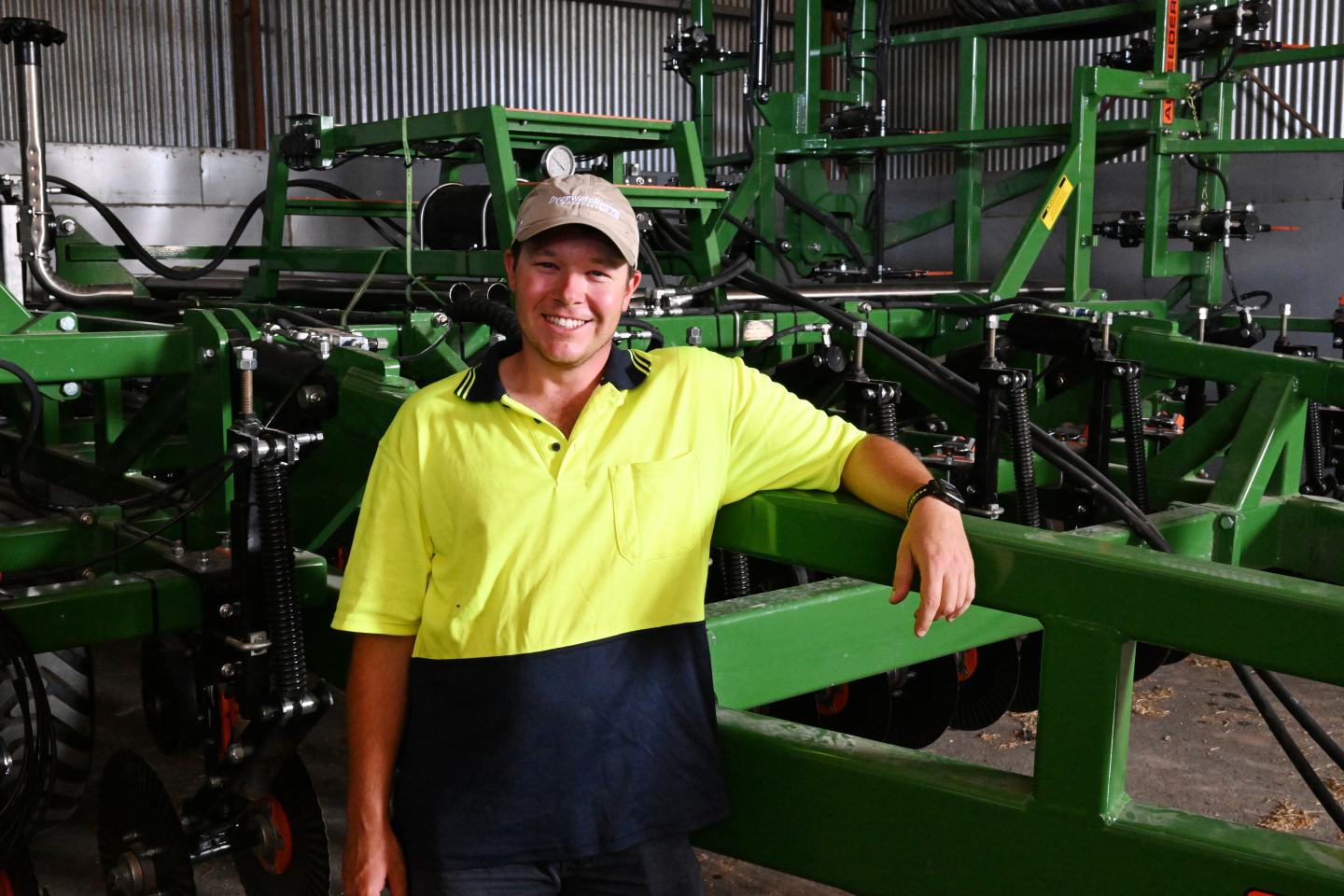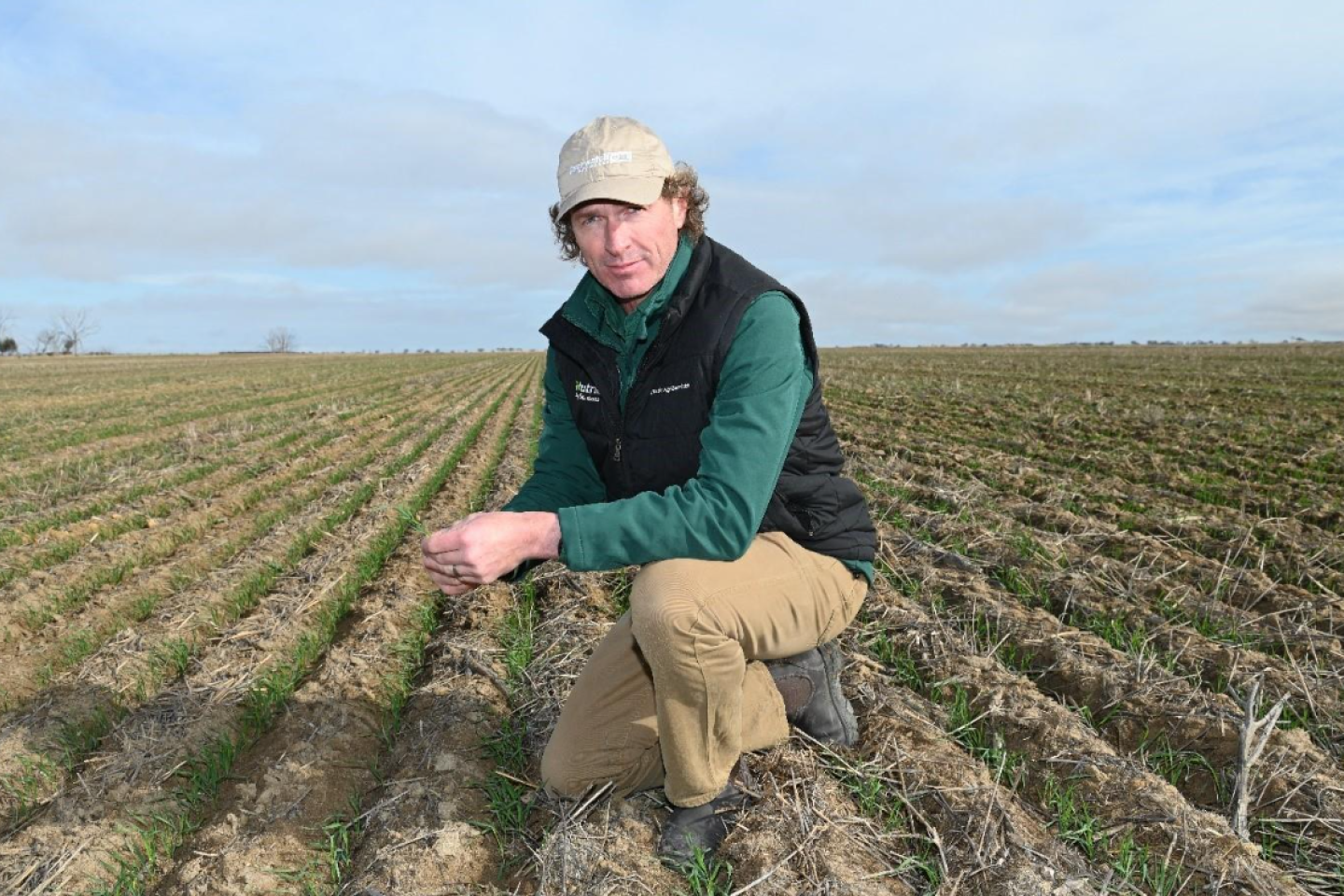A combination of Overwatch® Herbicide and barley provides Yorke Peninsula growers with an excellent alternative to the current focus of just wheat and lentils.
YP AG and WeedSmart agronomist, Chris Davey, said growers in the area love to grow wheat and lentils as their rotation but need another crop to assist with their weed control.
“Barley breaks that particular rotation up,” he said. “It's very low risk management and gives us a crop that is highly competitive with weeds.”
Adding to the challenges of growing crops on the Yorke Peninsula is the growing number of resistant ryegrass weeds in paddocks.
“We have ryegrass that's quite resistant, if not completely resistant, to trifluralin. It has very quickly become resistant to triallate, otherwise known as Avadex#, and prosulfocarb which is the main component of Boxer Gold#.”
“In the last couple of years of ryegrass testing, we've actually seen that resistance to Sakura# is starting to creep in as well.”
He said with those herbicides of concern, there are not a lot of options for controlling ryegrass, particularly resistant ryegrass in barley.
“This is where Overwatch® Herbicide and barley really have a complementary fit. With big populations of ryegrass that are very resistant, the two of them work very well, hand in hand."
Mr Davey said two of the problem weeds in lentils were milk thistle and bifora, with radish, mustard and tares also of concern.
“Overwatch® has a great fit for controlling the likes of milk thistle (sow thistle) and bifora. Barley gives us another break crop to control those broadleaf weeds and really reduce the weed seed bank in the soil. This sets us up really well for the lentils the following year.”
Overwatch® is a completely unique chemical in a group known as Group 13 (formerly Group Q).
“Being able to put that new mode of action in a rotation is a really strong way of controlling those problem weeds like ryegrass, bifora, milk thistle and wireweed, and getting suppression of wild radish and capeweed,” Mr Davey said.
“It has been an observation from myself and other YP AG agronomists this year that wherever Overwatch® was used in 2021, where we've got lentils this year, we've seen far less milk thistles and other broadleaf weeds.”
“There is a focus on ryegrass for obvious reasons but we're seeing this legacy of weed control from Overwatch® into lentil crops where the broadleaf weed control has been very, very good. It's carried through into our lentils and is helping us keep them cleaner for longer."
Mr Davey said barley crops produced a lot of stubble, a lot of bulk which provides good mulch for the following lentils, and also conserves moisture and suppresses weeds.
YP AG conducted trials with Overwatch® Herbicide back in 2018 which looked at different varieties, crop types and sowing orientations.
“With the correct choice of variety, and Overwatch® as the pre-emergent package, we were getting yield responses of a tonne and a half of barley, which was just incredible. That was directly related to the better ryegrass control,” Mr Davey said.
“The really positive news is that we can take back control of a problem weed like ryegrass, with the use of Overwatch® in barley.”
He said Overwatch® Herbicide was quite different to other pre-emergent herbicides, with its mode of action allowing the ryegrass to germinate before turning a magenta colour and being controlled.
“It's been something which has been eye opening for many reasons to growers and agronomists. That magenta colour is something which has become everyone's favourite colour now.”
“It’s been quite different for farmers to have the ryegrass come up and change colour. They can physically see what is happening in the paddock and the result that they're getting.”
He said the last two years had seen a lot of rain after seeding, however the Overwatch® Herbicide was still providing good residual control which gave a crop like barley a head start to then compete with weeds due to its tillering ability.
The commercial release of Overwatch® in 2021 was during an unusual season with a lot of rain after seeding and some bleaching effect in different crops.
“What really came to light was the movement of Overwatch®, Mr Davey said. “Things like Sakura# and trifluralin don't move that much in the soil. Having a slightly more soluble herbicide like Overwatch® in the 2021 season we did see more crop effect, particularly in barley.”
He said they learnt a lot of lessons from that year, which they applied in 2022.
“That was just to ensure that you did have that seeding depth correct. It’s particularly important after soil amelioration, like spading and deep ripping, where the bar tends to sink in or you're trying almost not to sow it too deep.”
“A little bit shallow and it is more prone to pre-emergent damage. Different soil types, those with low organic matter and/or low cation exchange capacity, tended to have more crop effect.”
“Ryegrass control with Overwatch® was excellent, and we've learned from those lessons about where its positioning is and how to use it better and we've had basically no problems at all in 2022, so it's been fantastic."
He said that seeding was vital to maximise weed control and minimise crop effect.
“I don't think you would treat Overwatch® any differently to any of those other pre-emergent herbicides. At sowing, you just don't want soil throw into the neighbouring furrows.
“One of the key things we learned from 2021 was the benefit of stubble. If you've got standing stubble there, it really does protect those neighbouring rows from that soil throw. Where we saw the most crop effects were in areas that didn't have any stubble.”
Overwatch® Herbicide can be used in conjunction with several other herbicides and Mr Davey said it was important to test for resistance and know what options are available.
“Know your resistance status of the likes of ryegrass, brome grass and wild oats, and what crop you're actually fitting your Overwatch® into.”
“For wheat for instance, if we've got resistant ryegrass but we know there's brome grass in the paddock, we'll be looking at utilizing trifluralin as well. With wild oats and ryegrass, the use of triallate or Avadex# Xtra (triallate) with Overwatch® provides a really solid pre-em package.”
“Both trifluralin and triallate obviously bind quite tightly on stubble so they haven't got as big a fit in the barley part of the rotation, but we've had great success with highly resistant big populations of ryegrass when we mix Boxer Gold# or prosulfocarb products like Arcade#, with Overwatch®. That has been absolute gold for ryegrass control."
Overwatch® Herbicide is registered in wheat, including durum wheat, barley, canola, faba beans and field peas and Mr Davey said it was a good fit in all of those crops.
“When a product like propyzamide last year was very hard to get, Overwatch® had a great fit for canola, and similarly with beans and peas”.
“Knowing where the fit is, whether it is product supply or herbicide resistance, is the key. My suggestion would be to use it once only in a rotation if possible. So that might be once every three years and supplement it or complement it with those other herbicide modes of action."

Chris Davey, of YP AG, sees an excellent fit for Overwatch® Herbicide in barley on the Yorke Peninsula of South Australia.



